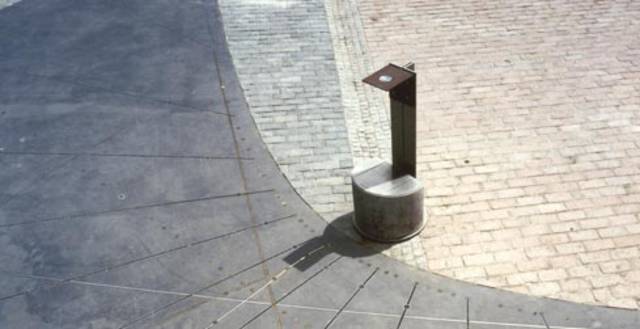
What Time is it, anyway?
Built with painstaking precision, the large sundial on the pavement in front of the Museum was calculated in 1999 by Yves Opizzo and Christian Tobin specifically for this location. Because of its size and precision, the time can be read to within nearly one second.
But what time does a sundial really indicate? Of course, here it shows the solar time for Furtwangen, so-called “apparent time”. However, apparent time does not always go by at the same rate as the time on a timepiece. For this reason we use so-called “mean time” on an everyday basis.
To assure that each town does not go by its own time, time has been standardized for vast areas. Germany, for example, goes by CET, Central European Time.
Sundials can also be calculated to show CET directly, but they take on extremely complicated shapes. Such a sundial, constructed by Martin Bernhardt of Bietigheim in 1965, is also located in front of the Museum.